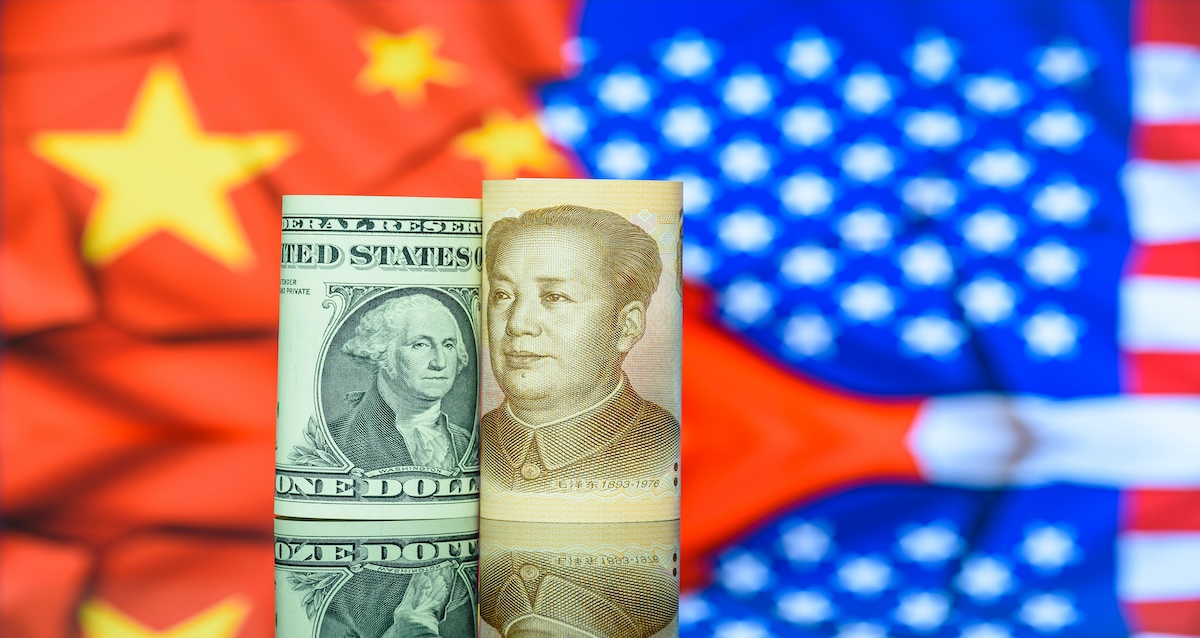China’s ‘puzzling’ sanctions approach decoded using new data

LAWRENCE — The United States and China might best be described as “frenemies.” But while outright military hostilities are currently kept in check, intensifying economic competition between the two superpowers can be observed in their use of sanctions.
“Governments can use economic interactions as carrots or sticks. Essentially, a sanction is a stick,” said Jack Zhang, assistant professor of political science at the University of Kansas.
“You use these to take away economic benefits, whether that’s through trade by withholding exports or through finance by freezing assets.”

Zhang explores this factor in a paper titled “Measuring Chinese economic sanctions 1949–2020: Introducing the China TIES dataset.” It introduces both a new dataset on sanctions involving China and a research framework for expanding knowledge about non-Western economic sanctions more generally. It’s published in Conflict Management and Peace Science.
“There is a big difference between U.S. and Chinese sanctions,” said Zhang, who co-wrote the paper with KU doctoral candidate Spencer Shanks. “Chinese sanctions are often informal in nature, and China denies they’re doing a lot of them.”
The U.S. is the country that imposes the most sanctions “by a long shot,” according to Zhang. The Office of Foreign Assets Control (part of the Department of the Treasury) plays a primary role in administering and enforcing many such programs.
“Especially after the end of the Cold War, it’s the instrument that presidents have reached for the most and the fastest. Like we have multiple sanctions against Russia right now, and there are new sanctions being implemented against Iran, North Korea, Cuba, etc. We also consider the Trump-era tariffs on China and export controls on technology to be sanctions,” he said.
The European Union as a bloc issues the second-greatest number of sanctions, but China’s unilateral use is a close third and will likely soon surpass the EU, Zhang said.
Why are Chinese sanctions far more prevalent in the last decade than in the past?
“To be able to use sanctions, you need to have economic benefits that you can withhold. China has become much more of a global economic player over the last 20 years,” he said.
“If you think about sanctions, you only have leverage if you are hurt less by the thing that you’re threatening to withhold. Small countries can, in theory, choose to embargo trade, but then they may need that trade more than the sending country.”
The Chinese Economic Sanctions dataset (aka China TIES) includes 135 episodes where China is the sender and 88 episodes where it is the target from 1949 to 2020. Zhang and Shanks use the Threat and Imposition of Economic Sanctions dataset (TIES v.4) as a baseline for identifying and coding sanctions episodes, and they provide a set of standardized narratives documenting each episode with secondary sources. The result is a dataset that is interoperable with TIES but also contains new variables that better capture the informal nature of many Chinese sanctions.
“I see this almost as an expansion set,” Zhang said.
“But there are two things we’re adding. One is temporal coverage. TIES is the workhorse dataset in the literature, but it only goes up to 2005. Most of these new Chinese economic sanction episodes and behaviors in the last 15 years are not covered. The second thing is that the original TIES data set doesn’t do a very good job of documentation, which makes it difficult to deal with informal sanctions.”
Ironically, sanctions rarely work the way they are intended.
“A common finding is that the threat of a sanction is more effective than the imposition of one for change of policy,” he said. “But with China, there isn’t this dynamic of threats that we usually see – which is puzzling. If threats often work better than actually imposing sanctions, why not go through the threat stage?”
A professor at KU since 2019, Zhang is also the founder and director of the KU Trade War Lab. His research explores the political economy of trade and conflict in East Asia with a focus on explaining why interdependent countries use military versus economic coercion in foreign policy disputes.
“One of the important contributions that I hope our paper will be able to show is to contextualize China sanctions behavior in an international context and in international benchmarks,” Zhang said. “I also think our approach strives to establish a new gold standard for how to build these quantitative datasets that are rooted in expertise in the region.”